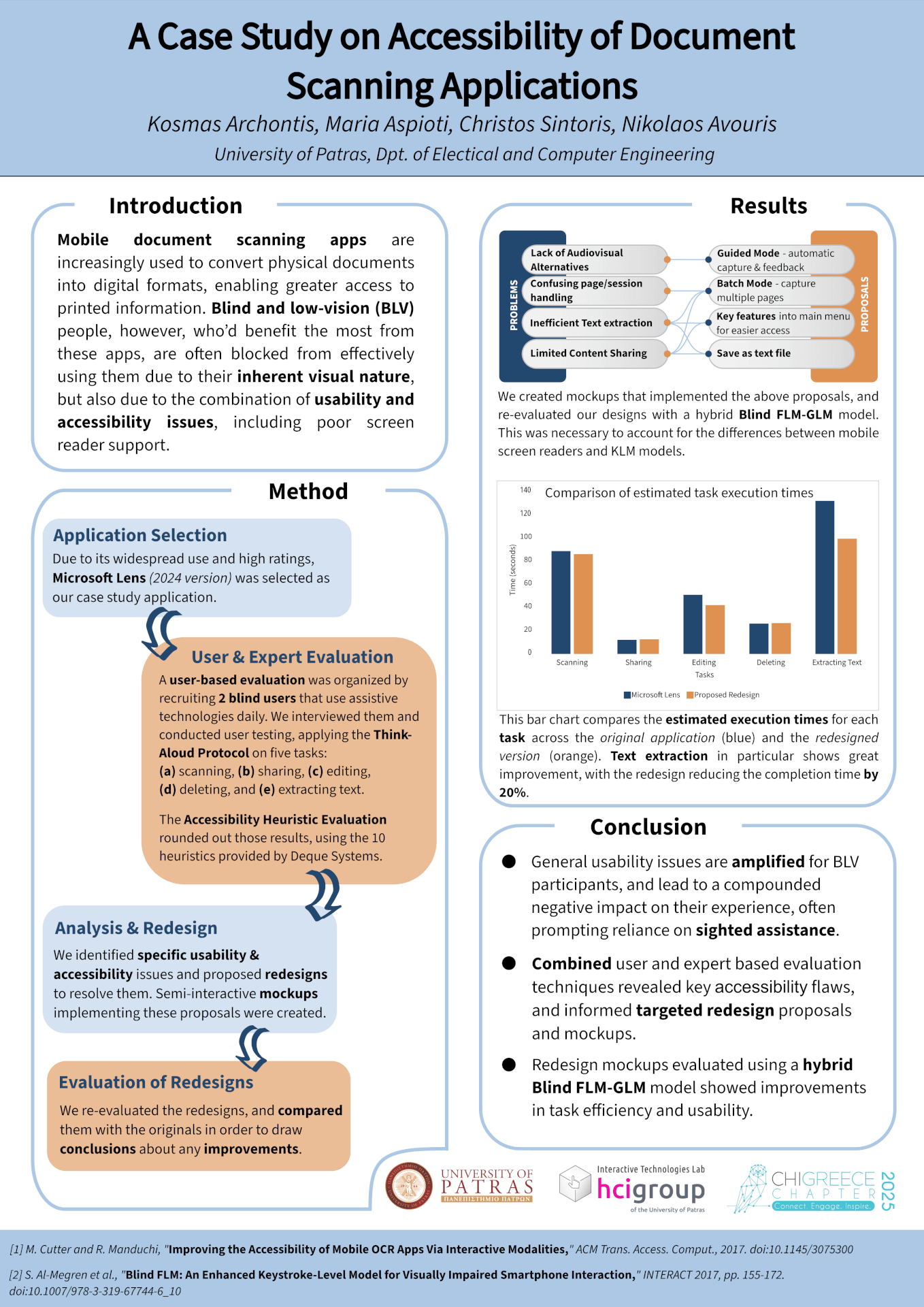Mobile document scanning apps are increasingly used to convert physical documents into digital formats, enabling greater access to printed information. Blind and low-vision (BLV) people, however, who’d benefit the most from these apps, are often blocked from effectively using them due to accessibility issues, especially those related to screen reader compatibility and other assistive technologies, like screen magnification. Prior research on the matter focused on camera interaction primarily, rather than providing a comprehensive analysis of the overall BLV user experience. As such, we conducted a broader usability and accessibility evaluation of a representative document scanning app, and proposed design recommendations with mock-ups illustrating their implementation, after identifying key problems. To investigate how BLV users interact with document scanning applications, we selected Microsoft Lens for its popularity, robust features, and Microsoft’s accessibility focus. Two functionally blind male participants, ages 22 and 23, both familiar with assistive technologies, were recruited. Each participant completed a remote user testing session via video call, verbalizing their thoughts throughout (Think-Aloud protocol) while performing five core tasks. To complement user insights, we conducted an expert-based Accessibility Heuristic Evaluation by Deque Systems, which adapted Nielsen’s 10 heuristics to align with Web Content Accessibility Guidelines (WCAG) standards.
Javascript must be enabled to continue!
A Case Study on Accessibility of Document Scanning Applications

